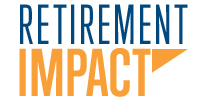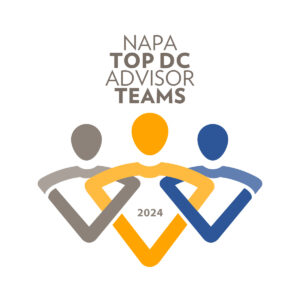Your Mid-year 401(k) Plan Check-up and Tune-up
As we round the corner to 2018, I can’t help but wonder, where did the year go? It feels like January and New Year’s resolutions were just yesterday. Alas, those days have come and gone, and the “next” New Year is only a few months ahead. This means now is the time to focus on benchmarking, evaluating your plan, reflecting on what you had hoped to accomplish, and putting 2018 plans together to work towards enhancing retirement plan success.
Three Point Check-Up
Let’s not ignore the elephant in the room: cost. If it’s been a while since you have price evaluated your company’s retirement plan, this is a great time to open the hood and find out exactly what you are paying. As an ERISA plan fiduciary, you have a duty to understand your costs and determine reasonableness.[1]
Some areas to review include:
- Investment expense ratios
- Recordkeeper asset charges and fixed dollar costs
- Advisor commissions and/or fees
- Third Party Administrator (TPA) invoices
Your service provider partners are consistently making improvements to their offerings, including better user interfaces on their websites, an increased ability to take on administrative tasks (thus freeing up more of your time), and working towards better communication programs to promote retirement readiness. It’s important to conduct a cost analysis to review how much your plan is paying and match services to align with your plan’s needs.
Tune-Up: Cost Reasonableness
Conduct a cost analysis for your company’s retirement plan. Benchmark your plan compared to other plans of similar size, industry, and demographic. Document the process. Determine the value of the services and assess fee reasonableness. There is value and there is cost. Remember cheaper is not always better. Match value and cost to determine fee reasonableness.
According to a recent study, the #2 concern of plan sponsors is: retirement readiness.[2] This is your employee’s ability of to actually retire. During your next committee meeting, look at your participant data and discuss retirement readiness.
Some questions to consider include:
- What percentage of employees are participating in the plan?
- What is the plan’s average deferral percentage?
- Are your employee’s investments properly diversified?
- What is the targeted income replacement ratio for our employees?
A best practice when reviewing participation, deferral, and allocation is to remember the 90-10-90 rule. This means that 90%+ of your employees are participating in the plan, employees are deferring 10%+ of their income to their retirement savings, and 90% of the participants are invested in appropriate portfolio allocations.
Tune-Up: Retirement Readiness
If your plan has less than 90% participation rate, you might consider a backsweep campaign. This could be a great January 1st initiative that aligns with the top New Year’s resolution: save more money.[3]
Next, as a plan sponsor, you could add an automatic auto-escalation feature to your plan. Talk with your service provider, advisor, and Third Party Administrator (TPA) about how to add this progressive feature. Consider helping your employees boost their savings rates by adopting a 2% auto-increase strategy.
Re-enrollment is a great way to engage employees who might have a “set-it and forget-it” approach to investing. This process reinvests all participants into your plan’s Qualified Default Investment Alterative (QDIA). This is a Safe Harbor provision that could add a layer of plan protection for you as the plan fiduciary.[4]
Tune-Up: Plan Design
The last check-up to consider is plan design. Is it meeting your plan objectives? Did you have corrective distributions last year? Do you want to reward top talent employees? Would you like to put away more for specific groups of employees? As an employer, would you like to contribute less? Most importantly, what is the goal of your company’s retirement plan?
By having a conversation with your TPA and reviewing your plan design now (most deadlines for plan design changes are October, so schedule your meetings today), you can update your plan information and be ready to implement it by January 2018. Your TPA will need your company’s census data and a clear understanding of what you would like to achieve.
Start Early to Maximize Success
December will be here soon enough, so don’t get caught asking yourself, “Where did the year go?” Work with a qualified retirement plan advisor to discuss your retirement plan’s cost reasonableness, retirement readiness statistics, and proactive plan design options. These are three key metrics to overall plan success that may help your firm become an employer of choice.
For information or help in evaluating these check-up and tune-up ideas, feel free to contact us to setup a conversation.
[1] “Understanding Retirement Plan Fees and Expenses.” Department of Labor. https://www.dol.gov/sites/default/files/ebsa/about-ebsa/our-activities/resource-center/publications/undrstndgrtrmnt.pdf
[2] “Sponsor Perceptions of Retirement Plan Services” VOYA. January 2017.
[3] “2017 New Year’s Resolutions: The Most Popular and How To Stick to Them.” NBC News. http://www.nbcnews.com/business/consumer/2017-new-year-s-resolutions-most-popular-how-stick-them-n701891
[4] “Using Re-enrollment to Improve Participant Investing and Provide Fiduciary Protections.” Drinker Biddle & Reath LLP. https://am.jpmorgan.com/blob-gim/1383280097884/83456/WP-RE-ENROLL.pdf
Related Posts
-
No "One Size Fits All" Plan Retirement plans come in all shapes and sizes: DC…
-
Evaluating Your Fiduciary Process Believe it or not, an efficient retirement plan committee does not…
-
What does it really take to retire? As a plan sponsor, your employees rely heavily…









